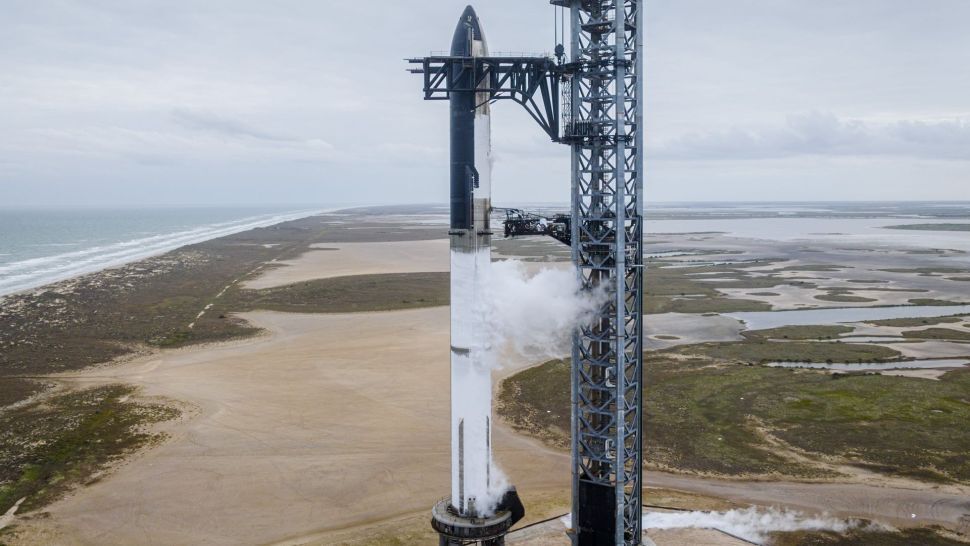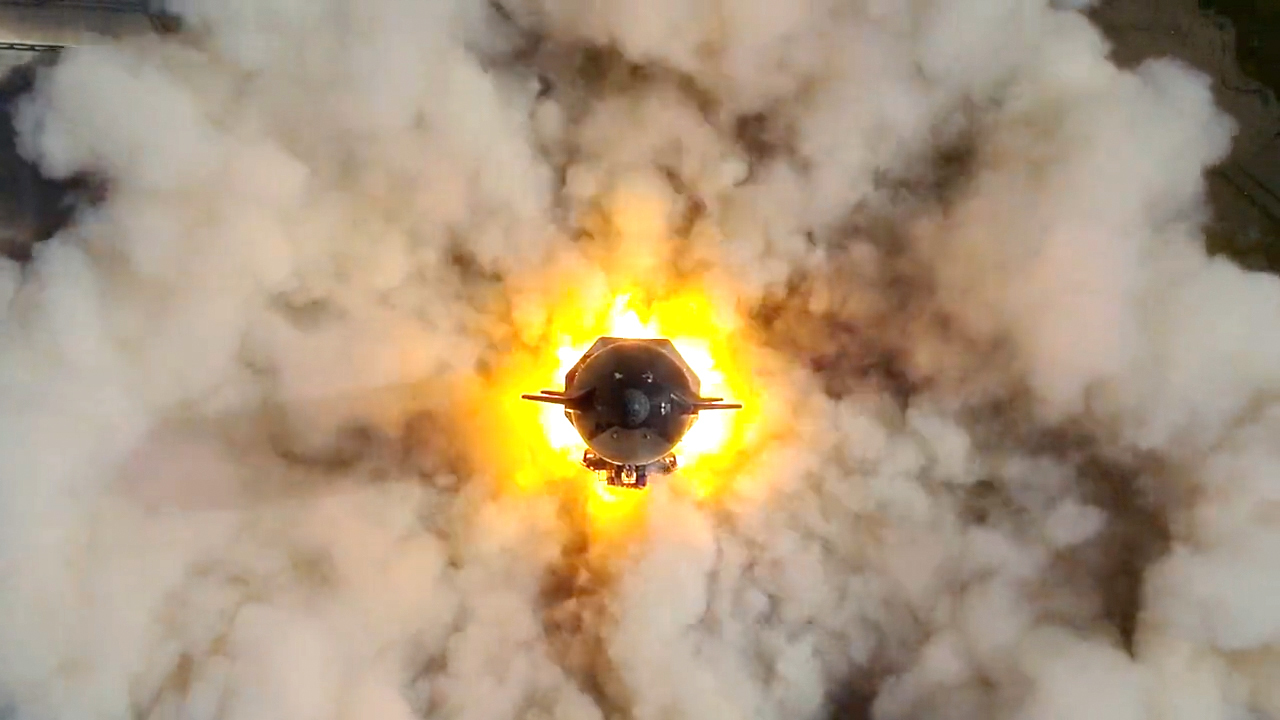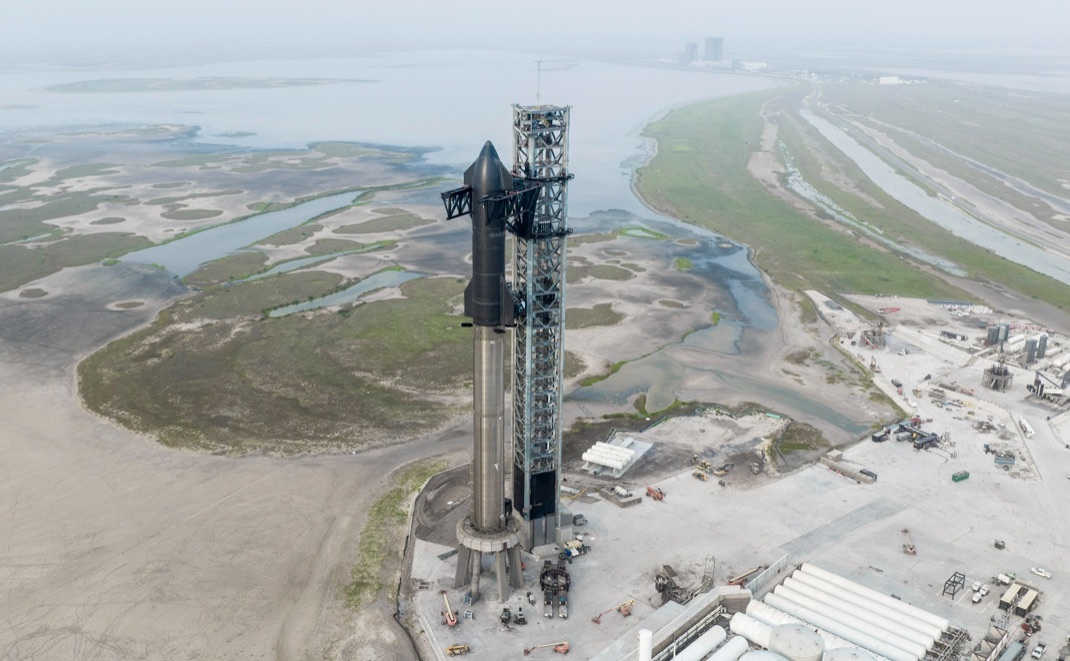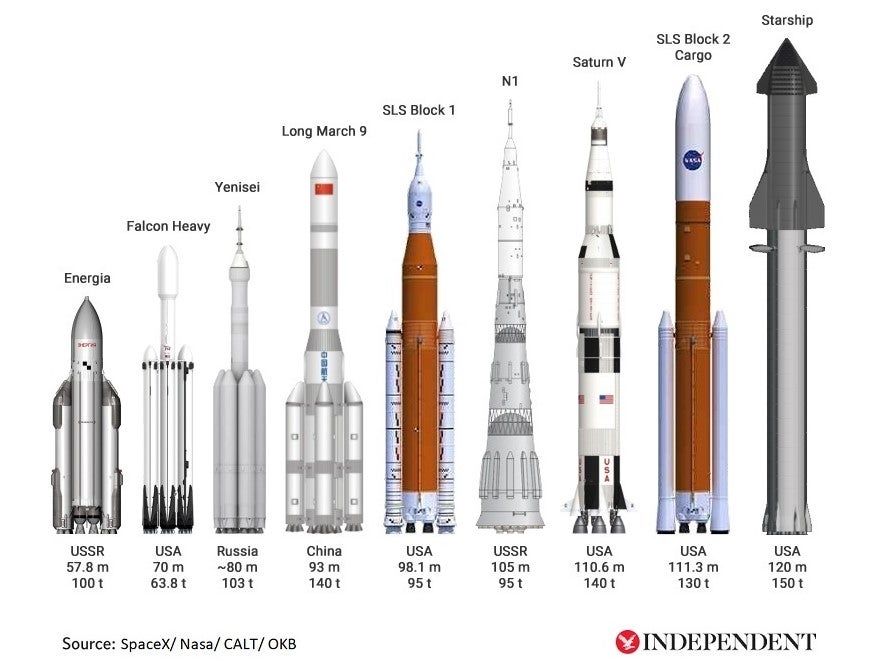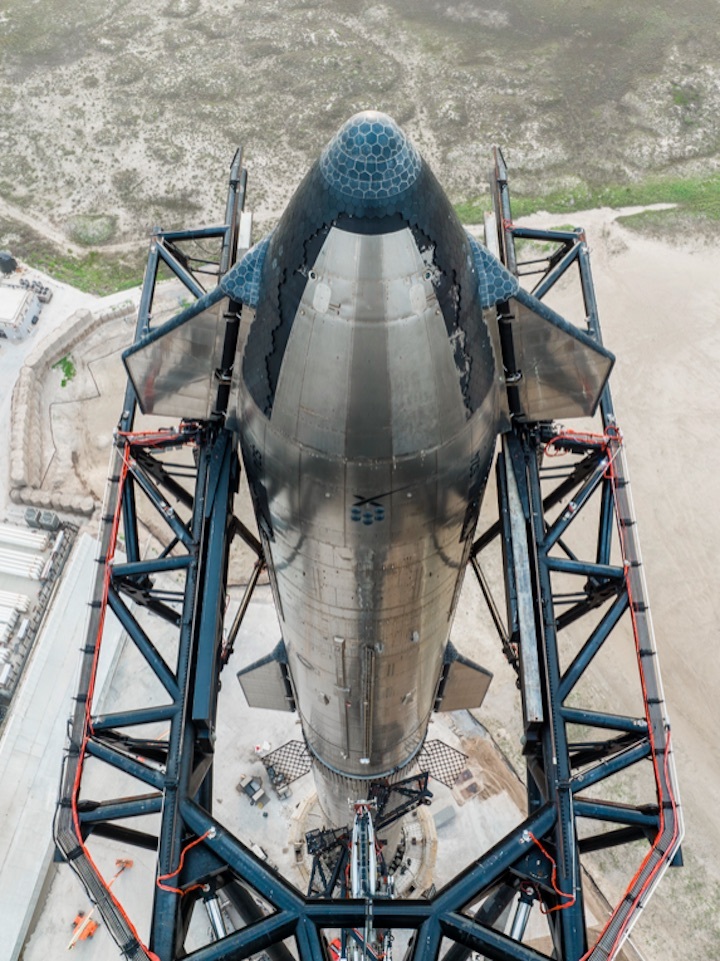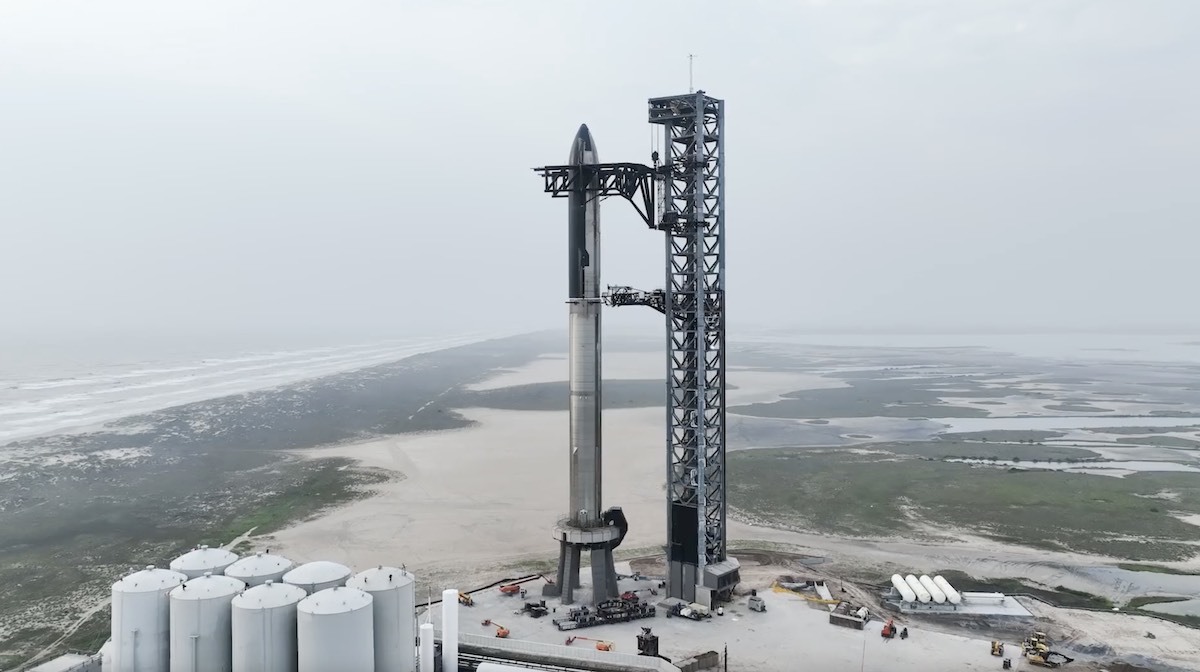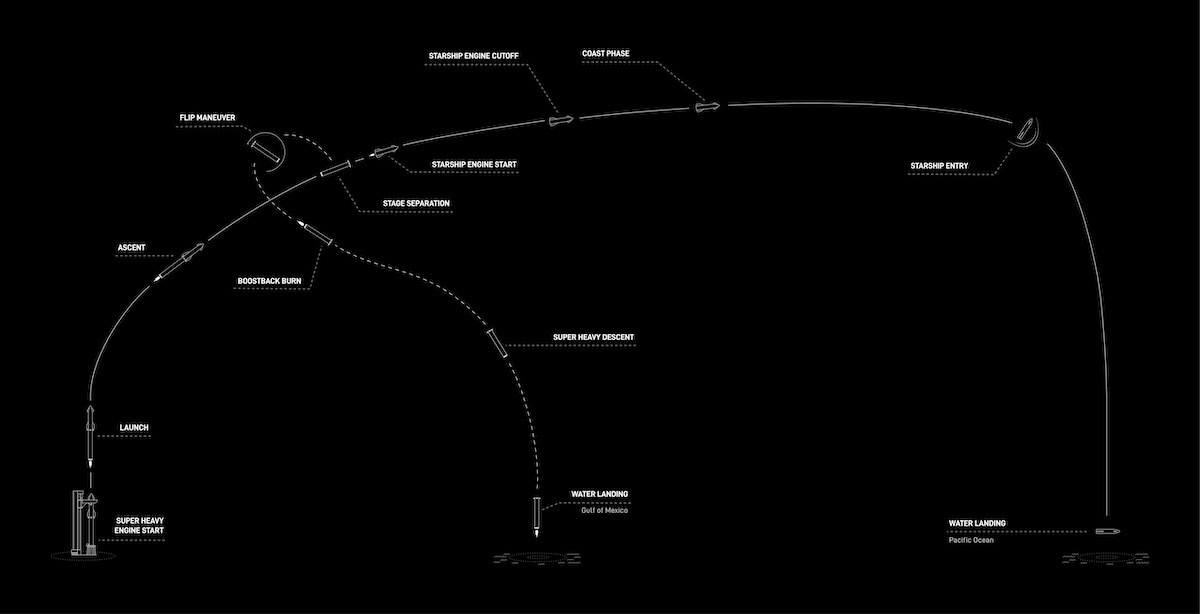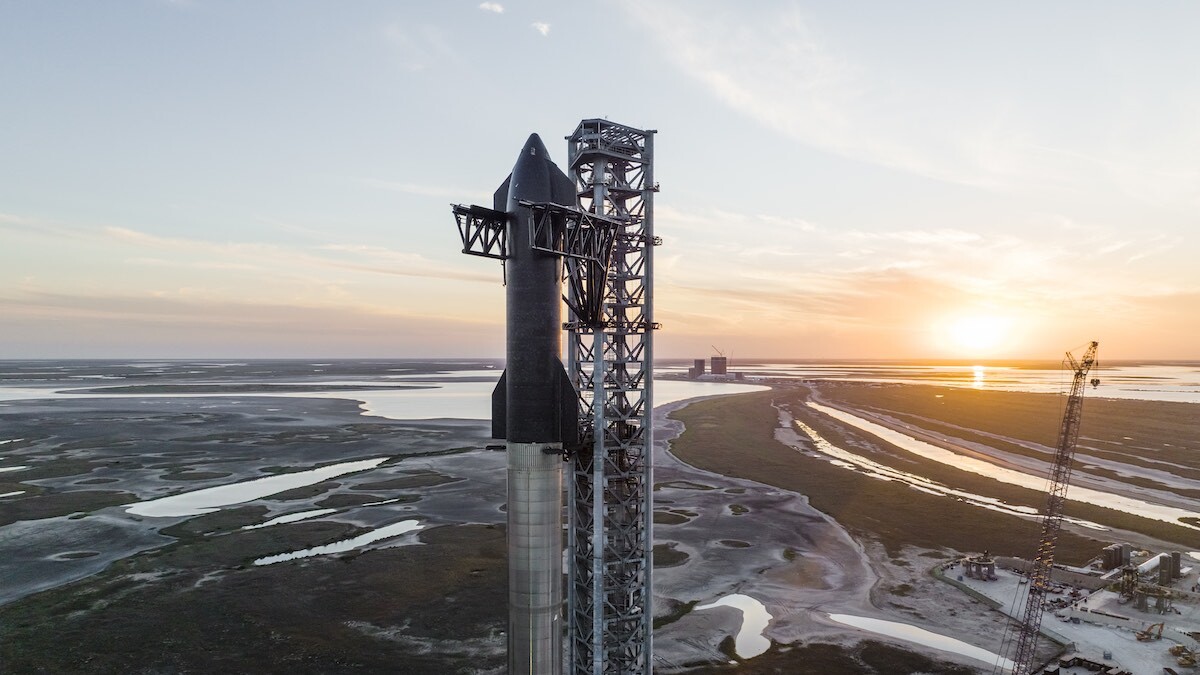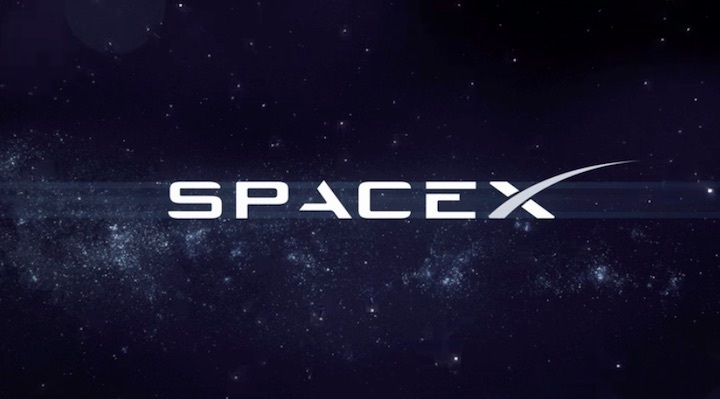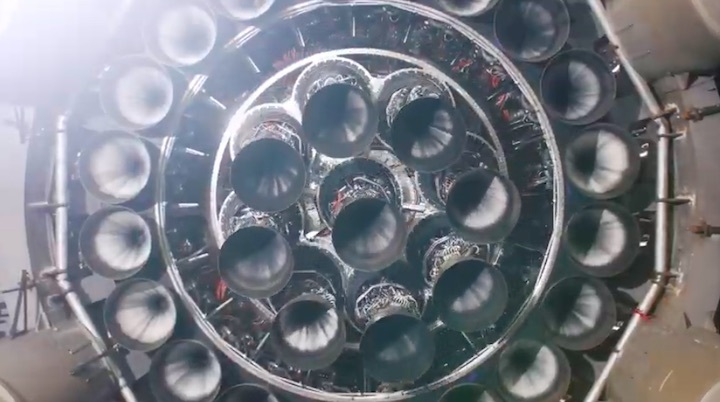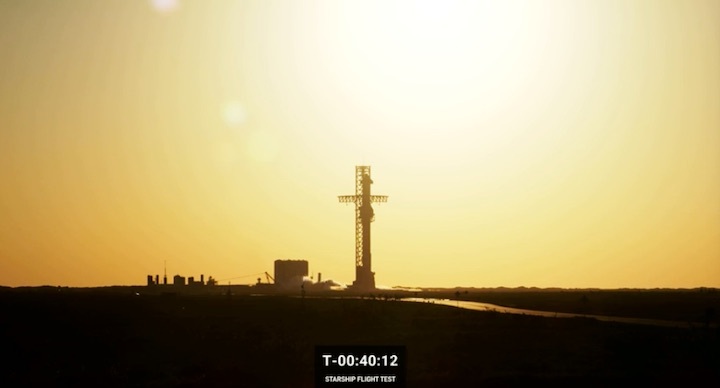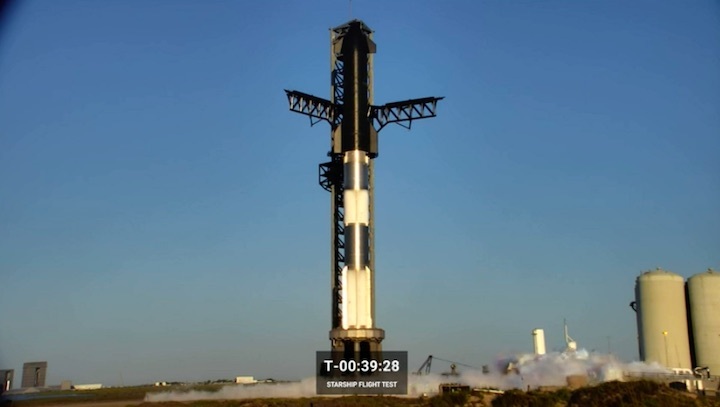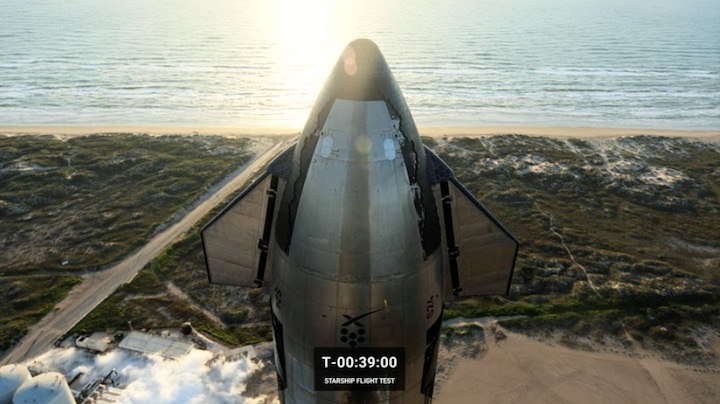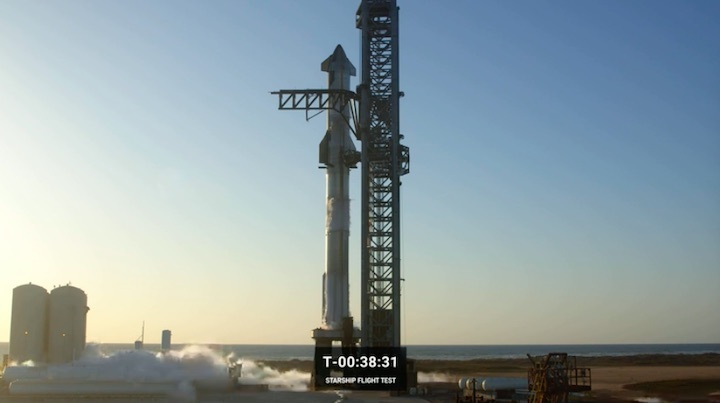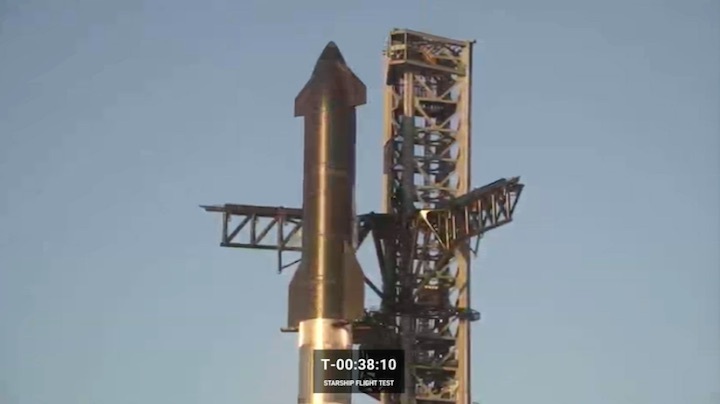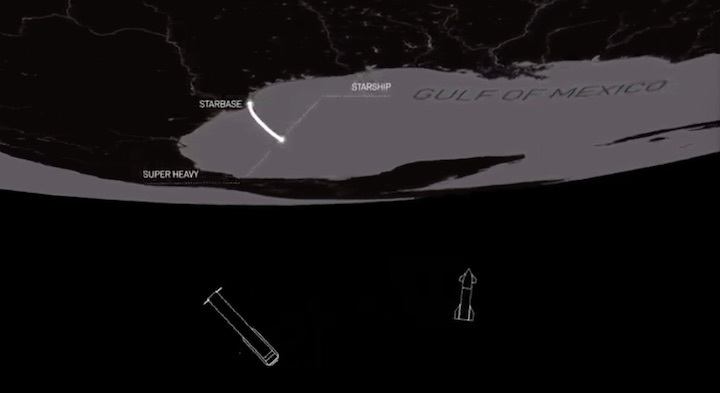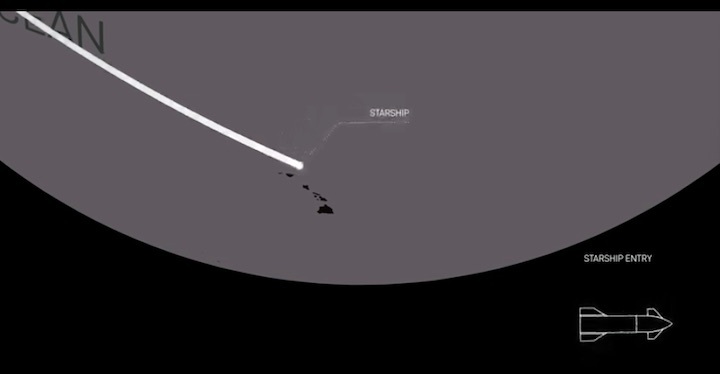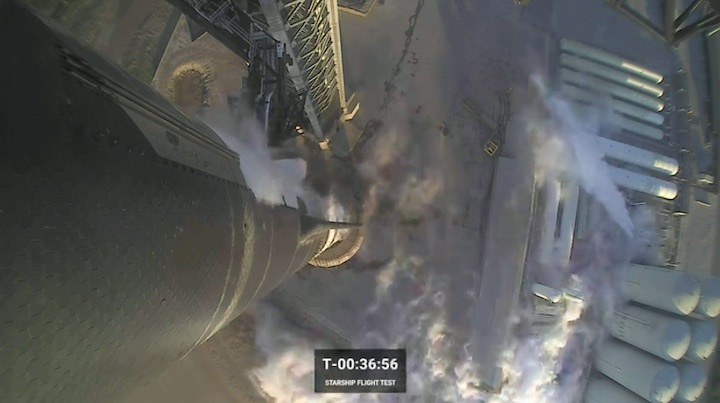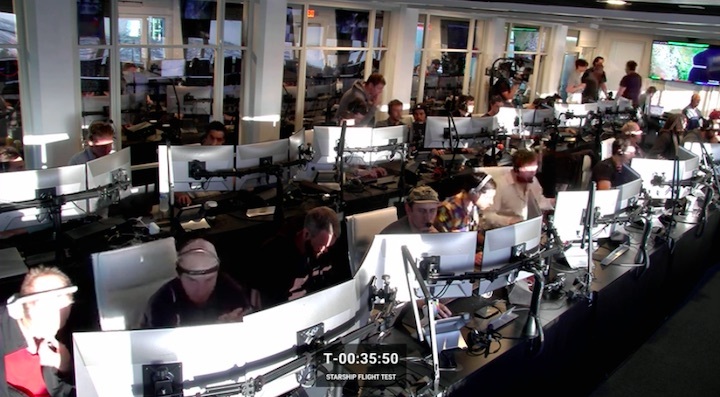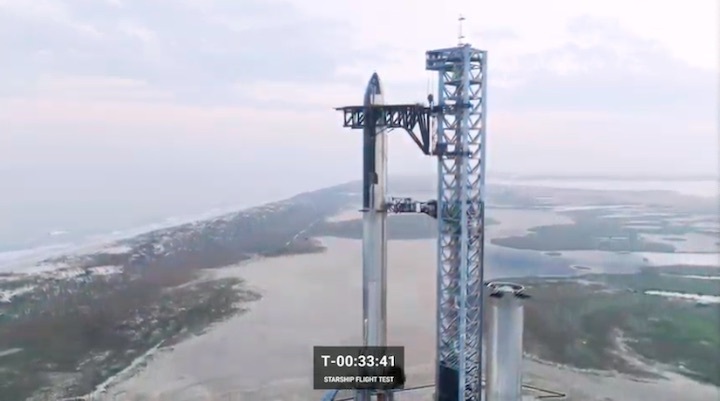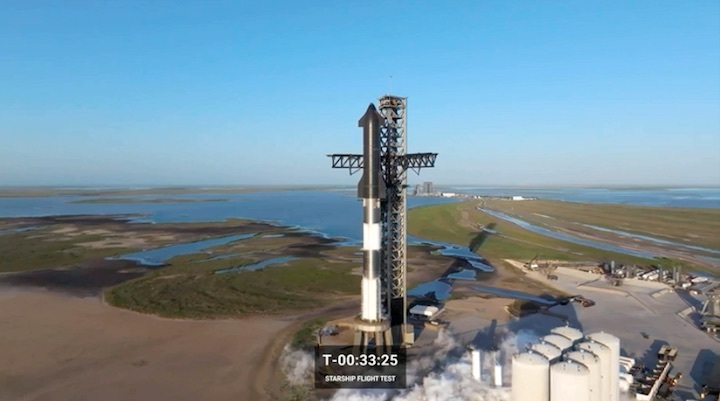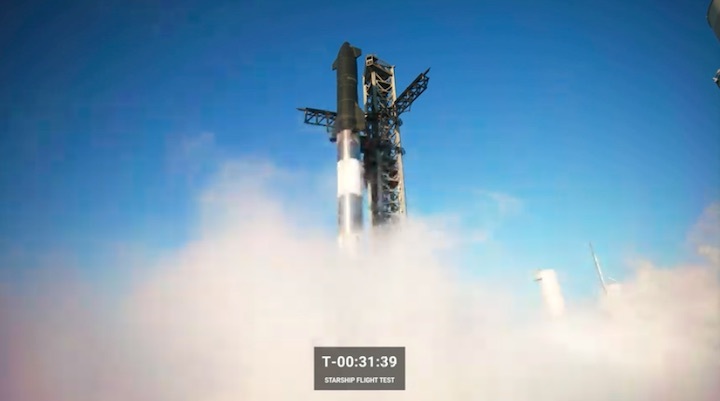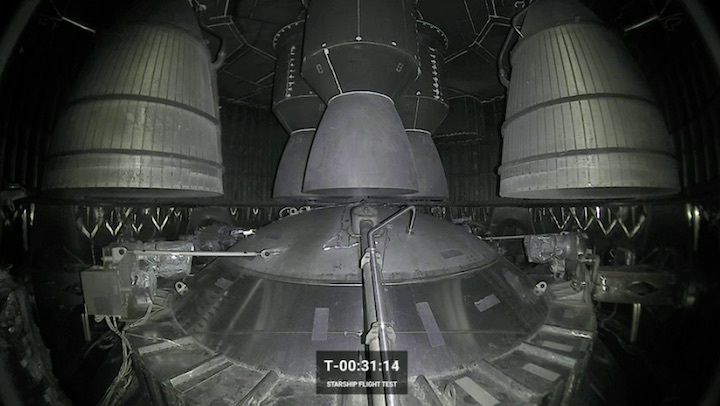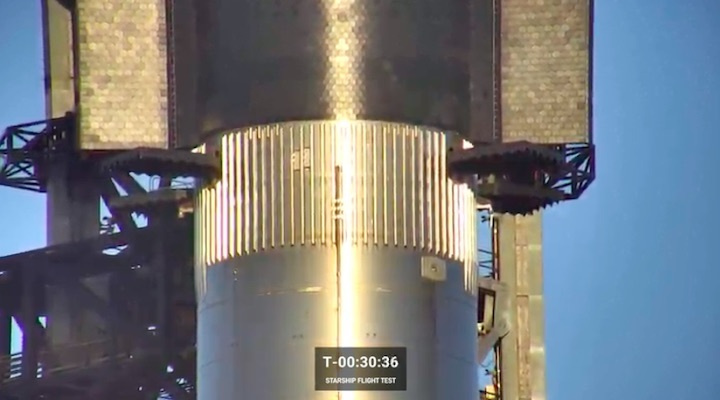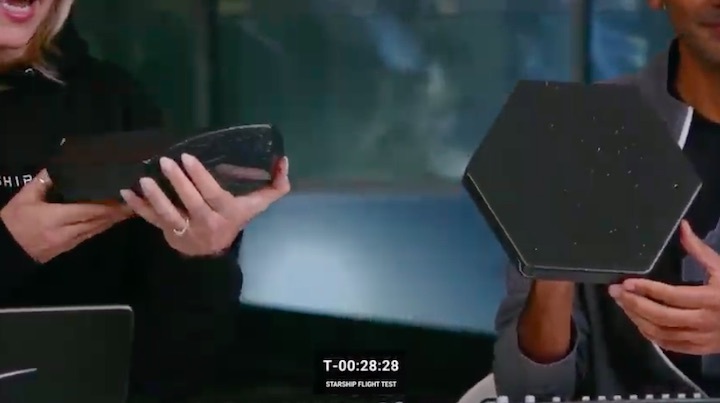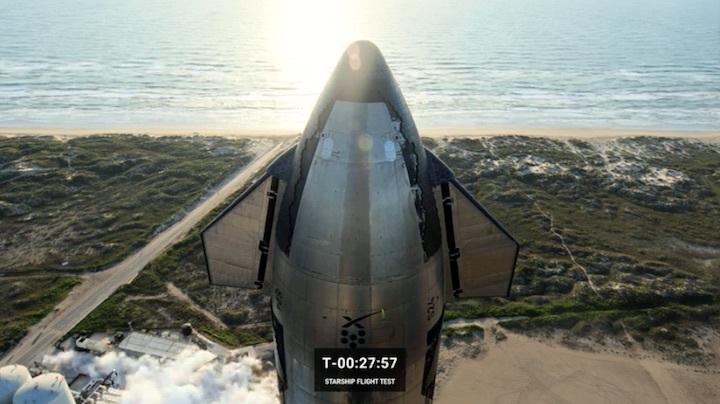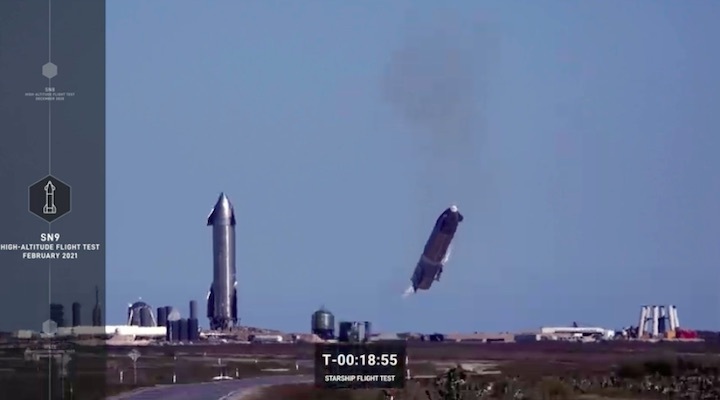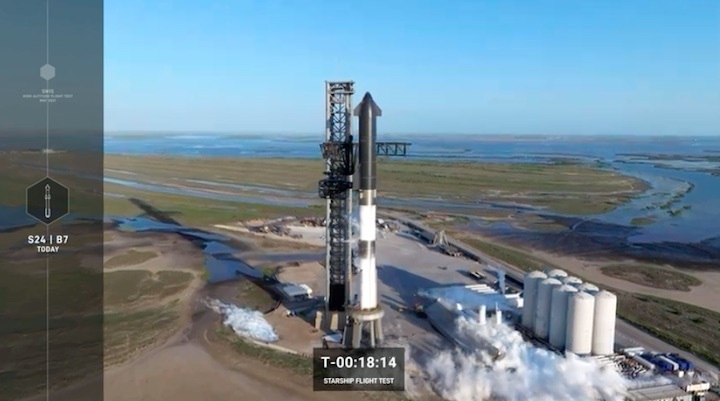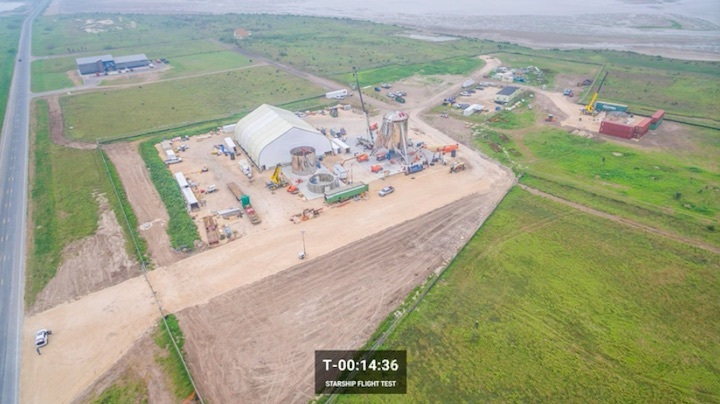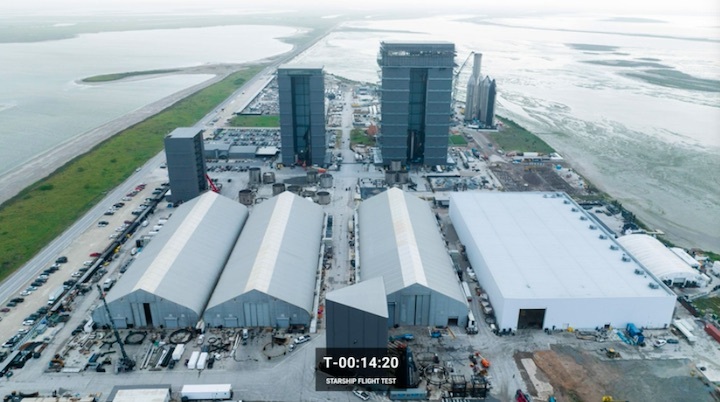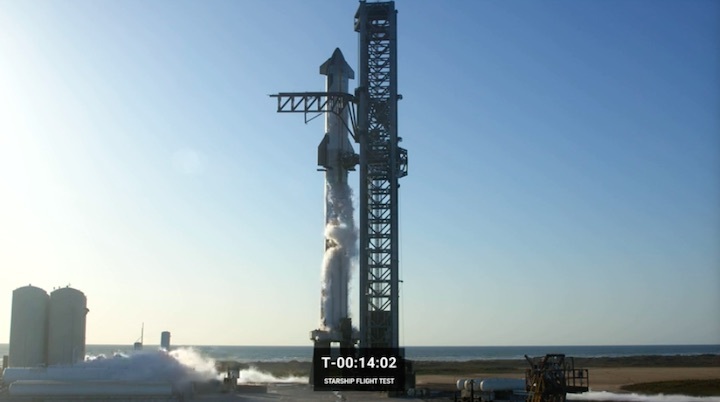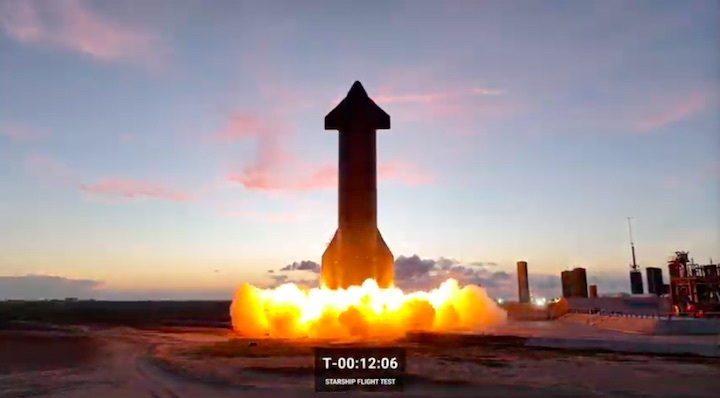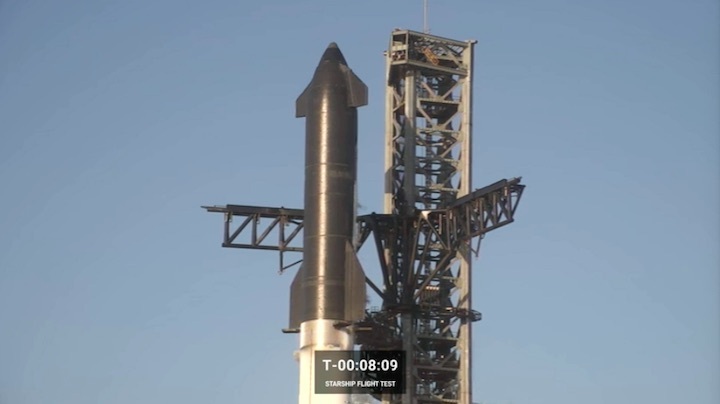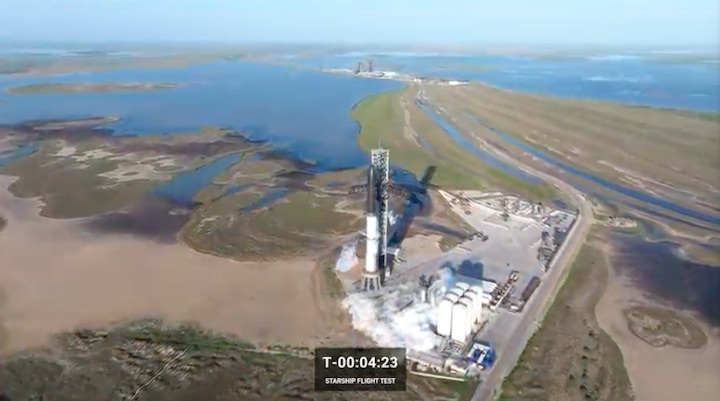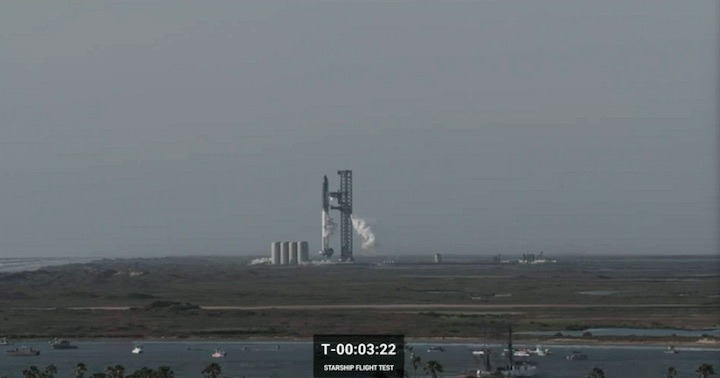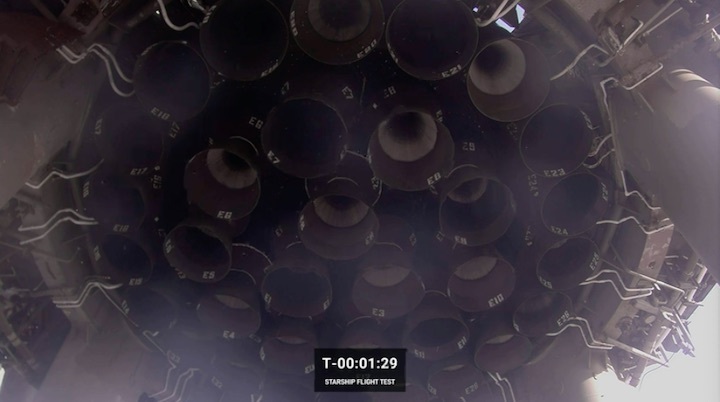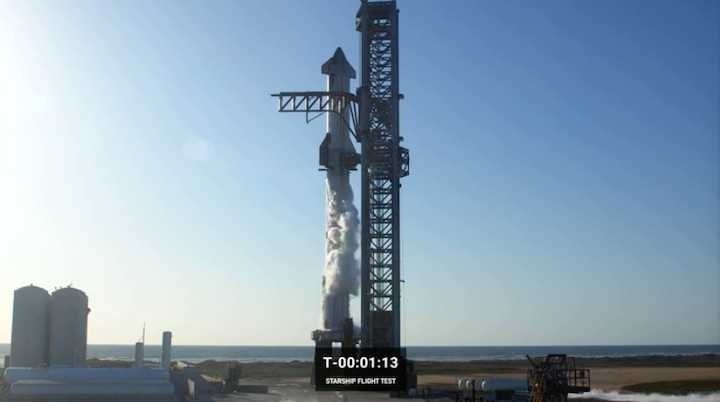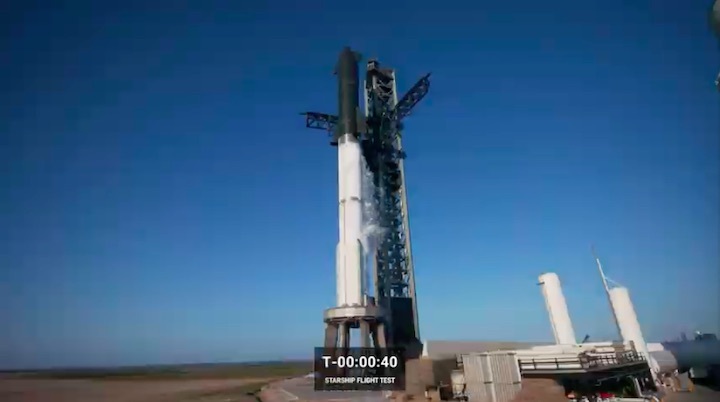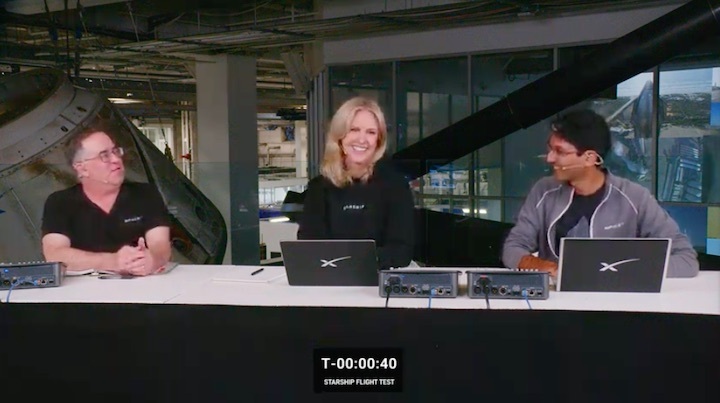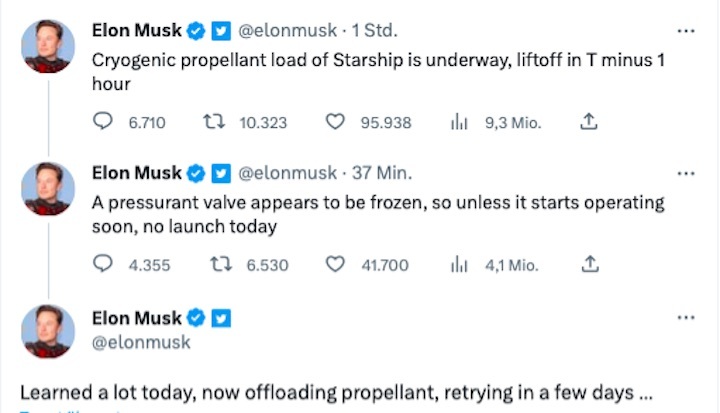14.02.2023
SpaceX rolls naked Starship prototype to test site
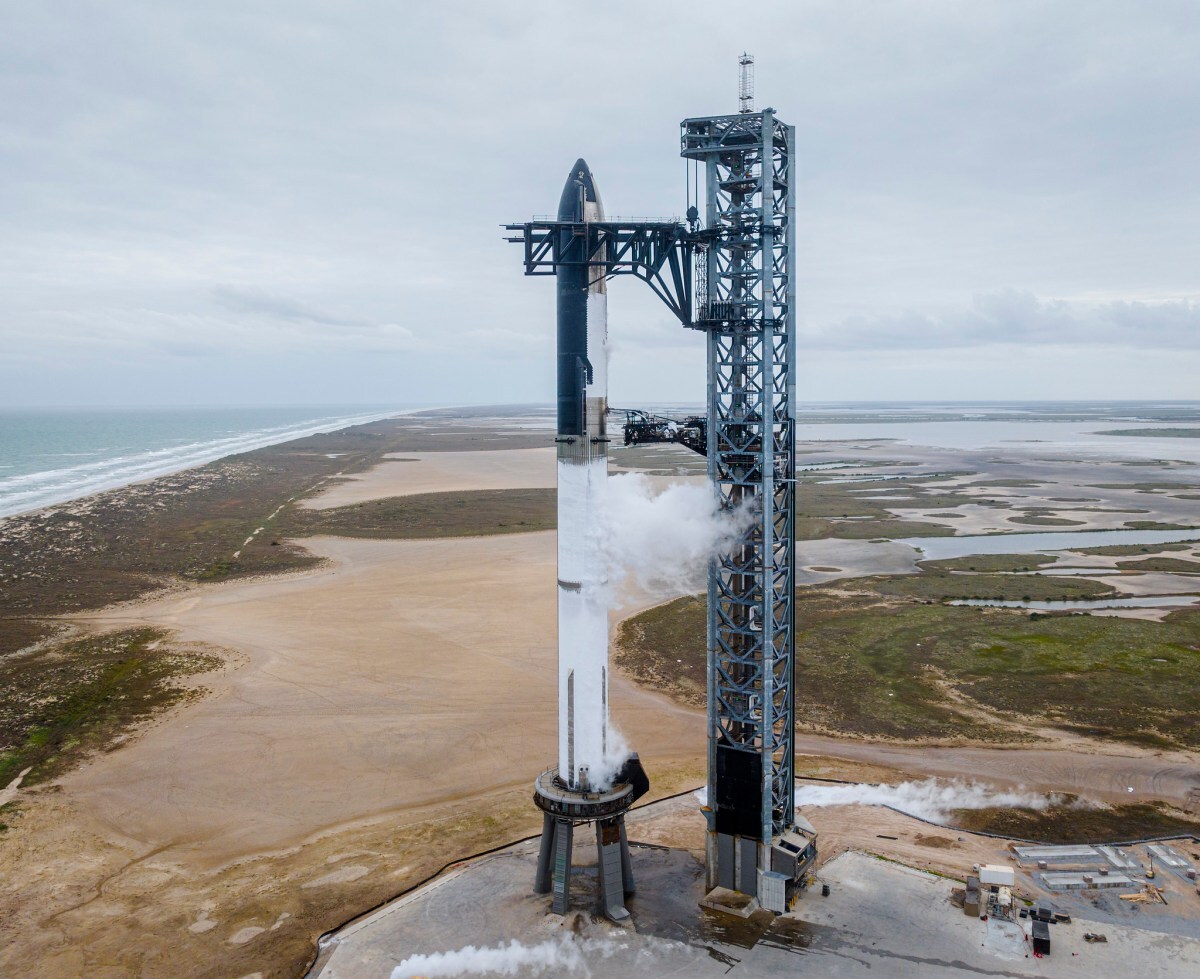
SpaceX has rolled a strange, naked Starship prototype from its Starbase, Texas factory to a nearby test site.
Beginning with its cone-tipped nose section, SpaceX started stacking Starship S26 in October 2022. By early January 2023, the prototype had been stacked to its full 50-meter (~165 ft) height and welded together. After about six more weeks of outfitting, Ship 26 left Starbase’s High Bay assembly facility and was transported to one of two stands formerly used for suborbital Starship test flights.
SpaceX lifted Ship 26 onto Suborbital Pad A on the morning of February 12th. Just a few hundred feet to the left, Starship prototype S25 watched from Suborbital Pad B while waiting for the start of its Raptor engine test campaign. Ship 26 is four months younger than Ship 25 and rolled out without Raptors installed, as it still needs to pass several simpler tests. That’s far from the only difference between the Starships.
STARBULLET
Aside from a range of smaller design changes, Ship 26 has three main differences relative to most prior Starships. First, it has zero heat shield tiles. Since the 2020-2021 period of suborbital Starship flight testing, all finished ships (S20, S21, S22, S24, S25) have been fitted with ~10,000 black, ceramic heat shield tiles. Eventually, those tiles will (theoretically) protect Starships from the intense heat created by reentering Earth’s atmosphere at orbital velocity.
Ship 26 also has no flaps. Since SpaceX first fully assembled a Starship in October 2020, every ship the company has completed (SN8, SN9, SN10, SN11, SN15, SN16, S20, S21, S22, S24, S25) has had four large flaps and form-fitting ‘aerocovers’ installed. Starships need flaps to steer and orient themselves during orbital reentries. They also need flaps to control themselves during exotic landing maneuvers, which require ships to free-fall belly-down (like a human skydiver) and aggressively flip into a vertical orientation for propulsive landings.
Finally, and most confusingly, Ship 26 has no payload bay of any kind. The end result is a smooth, featureless Starship that looks like a steel bullet, can’t return to Earth, and can’t deploy satellites. Combined, the fact it exists at all almost seems like an elaborate, multi-month mistake. But SpaceX clearly intended to build Ship 26 and is now preparing to qualify it for flight.
DEPOT, MOON LANDER, OR SOMETHING ELSE?
In simpler terms, Ship 26 is an intentionally expendable Starship with no way to launch satellites. That raises the obvious question: why does it exist? There are a few obvious possibilities. SpaceX is developing at least four types of Starships. The Crew and Tanker Ships will have heat shields and flaps. The Starship Moon lander will have no flaps or heat shield and will be painted white and insulated. A Depot Ship with stretched tanks will stay in orbit permanently and store propellant for in-space refilling.
Based on low-resolution renders, the bullet-like Depot Ship is the most reminiscent of Ship 26. However, there’s no evidence that Ship 26 has “exterior optical properties [optimized] for long duration [propellant storage].” The prototype also lacks any of the hardware likely needed for docking or propellant transfer and has propellant tanks that are the same size as past ships. To survive in orbit for days or weeks, it would need some kind of power source – typically solar arrays – that isn’t present. And even if an expendable Starship like S26 can already achieve SpaceX’s reported target of 250 tons (~550,000 lb) to low Earth orbit, 250 tons is only a fifth of a full propellant load.
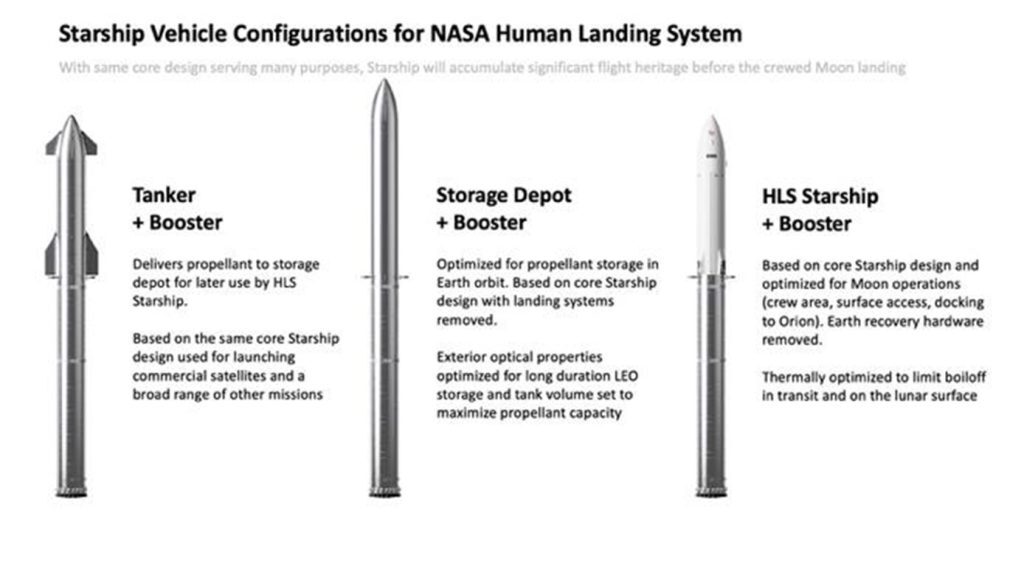
The Starship variants required for SpaceX’s NASA Moon landing contracts. (NASA)
Ship 26 could also be used for miscellaneous systems testing or a longevity demonstration in orbit. However, it’s unclear why SpaceX couldn’t simply do that with Ship 24 and Ship 25. Both have had their payload bays permanently sealed, meaning that they are only useful as test articles. The same is true for a tank-to-tank propellant transfer test SpaceX received a NASA contract to conduct in 2020. During that test, Starship will transfer “10 metric tons” of cryogenic liquid oxygen (LOx) between its main LOx tank and a smaller header LOx tank used to store landing propellant. But all Starships built to date have header tanks and could be used for the same test.
Ship 26 could exist primarily to demonstrate that a Starship with no flaps or heat shield tiles is aerodynamically stable during launch. However, expending an entire Starship for what amounts to wind tunnel testing would be extravagant.
PREPARING FOR FLIGHT
Regardless, Ship 26 is clearly destined for more than the scrapyard. The bullet-like prototype was installed on Suborbital Pad A, which SpaceX has modified for cryogenic proofing and structural testing. While coordinating with Ship 25, which needs to conduct static fire tests, Ship 26 will be pressurized and loaded with liquid nitrogen, liquid oxygen, or both to safely simulate the thermal and mechanical loads it will experience when filled with propellant. The stand is fitted with hydraulic rams that can simultaneously simulate the thrust of six Raptor engines (1380 tons / 3M lbf).
If it passes those tests, SpaceX will presumably return Ship 26 to the Starbase factory for Raptor installation. Strangely, the smooth Starship isn’t alone. It appears that Ship 27 will be more or less identical, with no heat shield or flaps. However, there’s evidence that Ship 27 will have the first working payload bay on a Starship and could be used to deploy full-size Starlink V2 satellites in addition to any other testing SpaceX wants to use it for.
The most exotic (and unlikeliest) explanation for Ship 26 and Ship 27 is that the pair is meant to support SpaceX’s first Starship docking and propellant transfer test. In October 2022, a NASA official indicated that SpaceX’s second Starship test flight would be a “Starship-to-Starship propellant transfer.”
For now, SpaceX’s priority is preparing Ship 24 and Super Heavy Booster 7 for Starship’s first orbital launch attempt, followed by preparing Ship 25 and Booster 9 for the second orbital test flight. Until then, Ship 26 and Ship 27 will likely remain a bit of a mystery.
Quelle: TESLARATI
----
Update: 22.02.2023
.
SpaceX proceeding with Starship orbital launch attempt after static fire
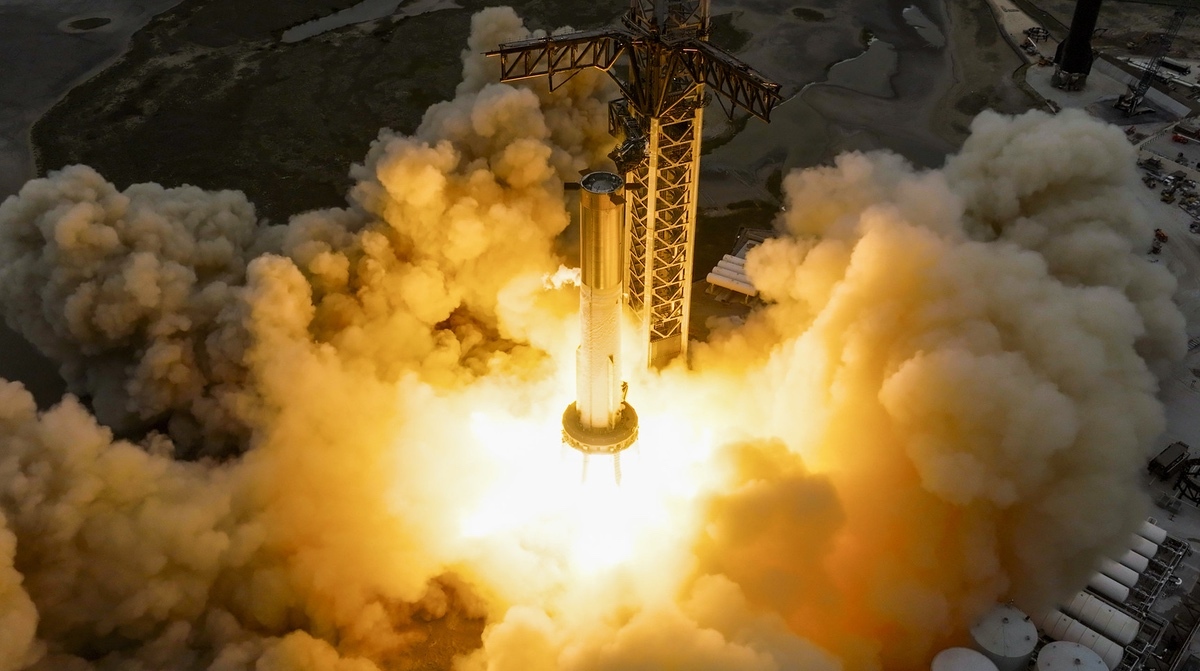
Both the Starship booster and the pad are in good shape after a Feb. 9 static-fire test, the last technical milestone before an orbital launch attempt. Credit: SpaceX
ORLANDO — SpaceX’s static-fire test of nearly all the engines in its Starship booster earlier this month was “the last box to check” before the vehicle’s first orbital launch attempt, likely some time in March, a company official said Feb. 21.
Speaking on a panel at the Space Mobility conference here about “rocket cargo” delivery, Gary Henry, senior advisor for national security space solutions at SpaceX, said both the Super Heavy booster and its launch pad were in good shape after the Feb. 9 test, clearing the way for an orbital launch that is still pending a Federal Aviation Administration launch license.
“We had a successful hot fire, and that was really the last box to check,” he said. “The vehicle is in good shape. The pad is in good shape.”
Only 31 of the 33 Raptor engines in the Super Heavy booster fired. SpaceX Chief Executive Elon Musk tweeted just after the test that one engine was commanded off just before ignition and a second shut down early. He later said that the engines ran at 50% of their rated thrust.
That led to speculation that SpaceX would need to perform a second static-fire test to get all 33 engines, or to run them at higher thrust levels. Henry, though, suggested that SpaceX was not planning another such test before an orbital launch attempt.
“Pretty much all of the prerequisites to supporting an orbital demonstration attempt here in the next month or so look good,” he said.
The company still needs to obtain an FAA launch license before attempting the launch. “We hope to secure that license in the very near future,” he said, setting up a launch attempt “probably in the month of March.”
Once SpaceX performs that orbital launch demonstration, Henry said the company is ready to move ahead rapidly with operational Starship launches. “We very, very quickly converge on a system that we can operationalize,” he said, starting with launches of second-generation Starlink satellites. “We have a few that are waiting very patiently to be launched on Starship.”
Those initial Starlink launches will serve as a test program, he explained, refining the launch and recovery of the two stages of Starship. “Somewhere in that journey that will be happening this year, we’re going to make a major pivot to the next piece of the Human Landing System architecture,” he said, by demonstrating the orbital depot needed for on-orbit refueling of the lunar lander version of Starship.
That will provide additional experience testing Starship through the tankers that will fly to deliver propellant to the depot. “The nice thing about tankers is that they’ve got to reenter as well,” he said. “We’ve created this rubric, in the next year or two, where we will be able to do a lot of experimentation on that thermal protection system that will allow successful reentry of Starship.”
Starship, Henry argued later in the panel, will sharply drive down launch costs. “We are on the cusp of seeing an opportunity of mass to orbit go from $2,000 a kilogram to $200 a kilogram,” he said. In the long term, costs could further decline to the point where the propellant is the largest factor in the per-launch marginal cost.
“If Elon gets his way,” he said, “you’re at $20 per kilogram.”
Quelle: SN
----
Update: 24.02.2023
.
The future of Starship includes national security missions
ORLANDO — As SpaceX prepares to attempt Starship’s first orbital flight, the company is contemplating military applications for the super-heavy launch vehicle.
Starship holds the potential to become a mobility platform for the U.S. military, said Gary Henry, senior advisor for national security space solutions at SpaceX.
Speaking Feb. 21 at the Space Mobility conference, Henry said the experience SpaceX will gain launching Starlink satellites on Starship and developing the vehicle for NASA’s Artemis program will help the U.S. military better understand how to employ it for cargo delivery and other missions.
Henry, a former Boeing executive and U.S. Air Force officer, is working with the Air Force Research Laboratory on potential concepts for using rockets for point-to-point cargo delivery under a $102 million five-year contract awarded in 2020.
Other space companies have signed agreements with U.S. Transportation Command to explore rocket cargo concepts but only SpaceX has won a large contract.
Greg Spanjers, program manager for rocket cargo at AFRL, said the military envisions a future when it could be cheaper to send cargo via rocket than by transport aircraft. In a national security or humanitarian crisis, a launch vehicle would fly from Cape Canaveral, for example, and either land on an austere field to deliver cargo or airdrop it.
For the rocket cargo program to be viable, Spanjers said, DoD expects to use launch providers that fly frequently so they can offer competitive pricing. “To make this a success, we need a very high launch rate, and we need to have systems that reenter and that can bring a high down mass,” he added.
With regard to Starship, Henry said, SpaceX is forecasting mass to orbit costs falling from $2,000 a kilogram to $200 a kilogram, or even lower, he said. “If Elon gets his way, you’re at $20 per kilogram.”
“The cost element of this is going to be pretty compelling, and it’ll happen soon,” Henry said.
Col. James Horne, deputy director of operations at U.S. Space Systems Command, said there are “compelling use cases” for shipping cargo around the world on rockets.
“When you think about the situation in the Indo-Pacific Command area of operations, there’s a tyranny of distance issue where you’ve got a vast desert of water … and you have island chains like we saw in World War II.”
That area “presents unique challenges from a mobility perspective that I think applications like rocket cargo could really help solve,” said Horne.
Horne said he could not discuss specific scenarios that are being looked at, but he said the military could face transportation challenges “that cannot be solved by ships or airplanes today.”
If rocket cargo moves forward and the technology matures, the Space Force would take the lead in managing the program and procuring services, he said. “We’re already starting to actively plan for a program standup in the 2026 timeframe.”
On-orbit infrastructure
Henry said Starship’s lunar landing architecture could support the U.S. military by providing on-orbit infrastructure for logistics and refueling.
For NASA’s moon program, SpaceX would launch a Starship to low Earth orbit to serve as a fuel depot for other vehicles that would be traveling to and from the lunar surface. That infrastructure could be leveraged for national security, he said. There are ongoing discussions about “on orbit commodities to enable things like dynamic space operations and ‘maneuver without regret.’”
These are terms used by U.S. Space Command to describe its vision for military operations in the space domain. Dynamic space operations is the ability to maneuver satellites and move payloads across different orbits, something that is not possible today because satellites don’t carry enough fuel and were not built to be refueled.
Lt. Gen. John Shaw during a talk at the Space Mobility conference, said the U.S. military cannot maneuver satellites “without regret” because it has to conserve precious fuel. He said that complicates the nation’s ability to compete in space with rival powers that have maneuvering satellites.
Henry said the Starship human landing system is on a path to support NASA, and not far into the future “we as a nation are going to have a capability that will fundamentally change the way we can protect and defend the space realm. And we are very excited about the prospects of being able to contribute to that discussion.”
Horne said the military is “going to need that infrastructure on orbit, not just for cargo, storage and movement, but for a lot of other applications. We’re gonna need gas tanks in the future. We may even have places where we are manufacturing things,” he added. “We’re going to find military-unique ways to use that from a national security perspective.”

